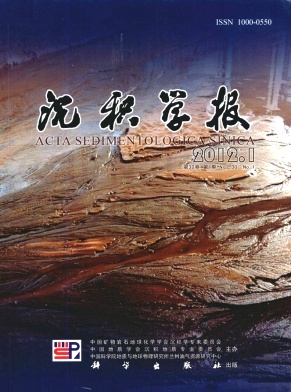Diagenesis of the Upper Carboniferous Phylloid Algal Reef Limestone in Ziyun County, Guizhou
- Publish Date: 2012-02-10
-
Key words:
- diagenesis
Abstract: The upper Carboniferous phylloid algal reef and circumjacent limestone has undergone intensive diagenesis in the Bianping Village of Houchang Town, Ziyun County, the cements,signs of the effect of the diagenesis, are prominent and representative in the region of Houchang Town. The diagenesis of phylloid algal reef limestone are studied in detail by means of rock outcrop and slab and thin section analysis and observation using polarising microscope, alizarin red and potassium ferricyanide staining, cathodoluminescence. Diagenetic environments in the reef limestone are recognized, paragenetic sequences determined, diagenetic stages divided, and the diagenetic history reconstructed . The main types of the diagenesis include micritization, cementation, neomorphism, physical compaction, dissolution, shear or hightemperature recrystallization, fracturing, etc. Among the processes, cementation, neomorphism, dissolution affect rock over a long time, intensively, having various appearances. During syndiagenetic stage, sediment rich in the fragments of phylloid algal thalli had high porosity and largely preserved shelter porosity, micritization and cementation occurs extensively, marine botryoidal cement and acicular cement grew in pores; whereas bioclastic wackestone and packstone sediment poor in the fragments of phylloid algal thalli generally had low porosity and permeability, micrite cement grew in pores. There were light compaction and dissolution, and cementation that play a key role in the diagenetic process of the reef limestone, during early diagenetic stage. Cementation supplied a great deal cements, including blocky calcite spar and calcite microspar precipitated in small pores, and radiating cement fans grew in big pores. Cementation constructed rock framework, and consequently decided the features of the limestone rock. During epidiagenetic stag, vuggy or channel porosity was created by intense meteoric dissolution in the recharge area; meteoric phreatic cements precipitated in downflow areas, including isopachous columnar cement, and equant and blocky calcite cement, isopachous columnar cement is volumetrically more abundant. So far the porosity of the reef limestone bad been reduced dramatically through earlystage cementation, so the reef limestone could prevent mechanical compaction. During middle and late diagenetic stage, nearly occluded porosity was filled with isopachous bladed cement and coarse drusy or blocky calcite spar because of low rates of fluid influx and efflux, making total porosity in the reef limestone reduce to approximately zero. Preexisting cements were altered on the hydrocarbon composition and color, but the crystal fabrics unaltered. The color of isopachous bladed to columnar calcite cement changed from gray to white, and the color of botryoidal cement became more blackish due to hydrocarbon infiltration. A little isopachous bladed to columnar calcite cement were dissolved, leaving mouldic pores filled subsequently. Construction fracturing is one of the main types of diagenesis that took place during catagenesis stage. Rusty microcrystalline layers containing Fe2O3 lining the wall of some fractures, and vadose pisoids and ferrugineous crystal silt containing Fe2O3 deposited at the bottom of the cavities formed in the tectonic fractures, indicate that they formed in oxidizing vadose environments. Most fractures are filled with white or green bladed cement and clear coarse sparry calcite cement, the middle part of some fractures is filled with bitumen block. Nearly all twins in calcite filling fractures are thicker than 1μm, therefore it can be derived that the thick twins deformed at the temperature above 200℃. So the phylloid algal reef limestone was again buried deeper than 2.8km during catagenesis stage. This indicates that the Nanpanjiang Basin has undergone frequent elevationsubsidence. It might be a reason for that the phylloid algal reef limestone did not become oil and gas reservoirs that the pores of the phylloid algal reef limestone were occluded by burial cement. Only limestone that has large interconnected secondary pores generated during catagenesis stage could become oil and gas reservoirs in the Nanpanjiang Basin.
| Citation: | Diagenesis of the Upper Carboniferous Phylloid Algal Reef Limestone in Ziyun County, Guizhou[J]. Acta Sedimentologica Sinica, 2012, 30(1): 43-53. |






 DownLoad:
DownLoad: